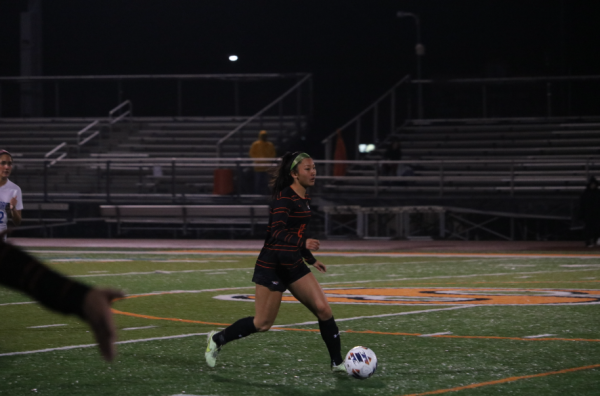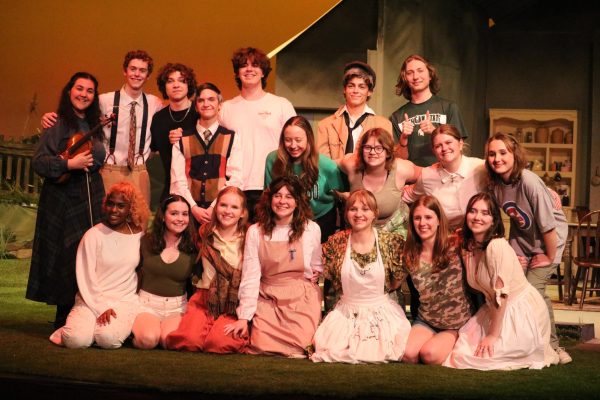Never Have I Ever… Seen (Proper) Indian Representation in Media
Growing up, I’ve always idolized women in media. It was easy to see myself in them and relate to their struggles; however, the women I’ve seen on screen had blonde hair, blue eyes and pale skin – in reality, they were nothing like me.
I couldn’t relate to their love of hot dogs and hamburgers, and I didn’t have any cherished Christmas memories either – I grew up in a Hindu family and celebrated Diwali instead.
The first time I saw an Indian character on screen was when I was five, and he was Mowgli from The Jungle Book.
I was delighted to see a Desi (a person of Indian, Pakistani, or Bangladeshi heritage) character on screen. Still, I couldn’t help but notice that he was a boy living in the jungle – not exactly someone I could relate to.
Representation (the accurate and respectful portrayal of different communities and their culture and lifestyle in media) is essential because everyone deserves to see a hero like themselves in media, know that they can be the main character, see other people, and understand the world for how diverse it truly is.
I remember how excited I was when I heard about Never Have I Ever (NHIE), a Netflix series by Mindy Kaling starring Maitreyi Ramakrishnan as Devi Vishwakumar. The plot revolves around Devi, an Indian-American high school girl, her friends, love life, and overcoming her grief surrounding her father’s death.
I was extremely excited about how there would finally be a character I could fully relate to. However, I was very disappointed when I finished watching it.
Devi was a bold, somewhat accurately presented Indian-American high school girl – except she had an intense loathing for her culture.
At first, I thought I was overanalyzing; everyone else liked the show, didn’t they?
However, even after rewatching the show twice, I was still dissatisfied with many themes and aspects of the show, most prominently Devi’s internalized racism. Internalized racism is dismissing and looking down on one’s culture, race, or ethnicity due to ignorance, lack of understanding, or wanting to fit in among people who look down upon or are uneducated about that community.
Devi constantly criticizes many aspects of Indian culture, from the clothing to her cousin’s accent, reproaching her for being “too Indian.” Devi is, according to Nirdesh, another Indian character introduced in season three, “One of those Indian girls who thinks all Indian dudes are just computer geeks.”
Internalized racism and overcoming it is often a part of growing up for many people of color in the US (I’ve grown to accept and love my Telugu heritage since I was nine). However, Devi still has not overcome it despite three seasons of NHIE. There’s no point in having a person of color as the main character if they can’t overcome their internalized racism.
Another problem in the show was the overall representation of Indian culture and other marginalized communities; although it’s tricky to spot, NHIE is ridden with stereotypes (widely held, often oversimplified, offensive perspectives on a culture).
In the show’s pilot episode, Devi was in a wheelchair (her body’s trauma-induced response to her father’s sudden death). However, this didn’t last long because she was “miraculously” cured by the sight of an attractive boy.
To make matters worse, the narrator, John McEnroe, decides to say, “Can she shed her old identity as the paralyzed Indian girl it’s not likely. Those things are pretty unforgettable, but with working legs comes a whole host of new possibilities.”
This statement is exceptionally ableist, implying that the worst thing that Devi could be was a paralyzed Indian girl. This scene also reinforces the “miraculous cure” trope, which enforces the idea that disabled people cannot live fulfilling lives with their disabilities and must “cure” them. This trope is often used in the stories of disabled characters, and it is disappointing that NHIE follows in the same footsteps.
Other issues include the demonization of the other Indian women in the show referred to as “aunties”; the “Tiger Mom” trope associated with Asian women; the unrealistic lack of Tamil dialogue; queer misrepresentation; pitting women against one another; and the tokenization (and half-baked representation) of minority identities and cultures, such as Aneesa being Muslim, Fabiola and Eleanor’s racial identities hardly ever being explored, and the awful presentation of the Hindu festival Navaratri in season three.
Seeing a character with the same race and nationality as me on screen was refreshing. Still, I am hoping to see more accurate, respectful, and heartwarming portrayals of Indian characters in the future.








